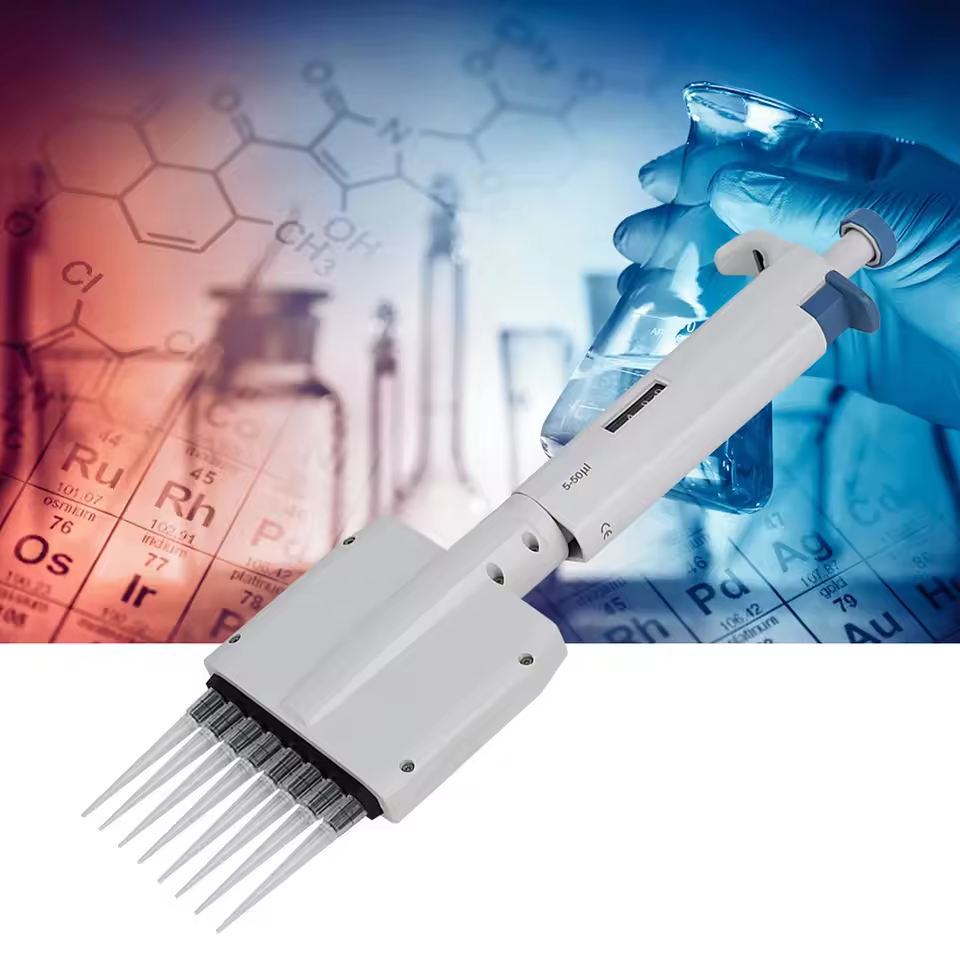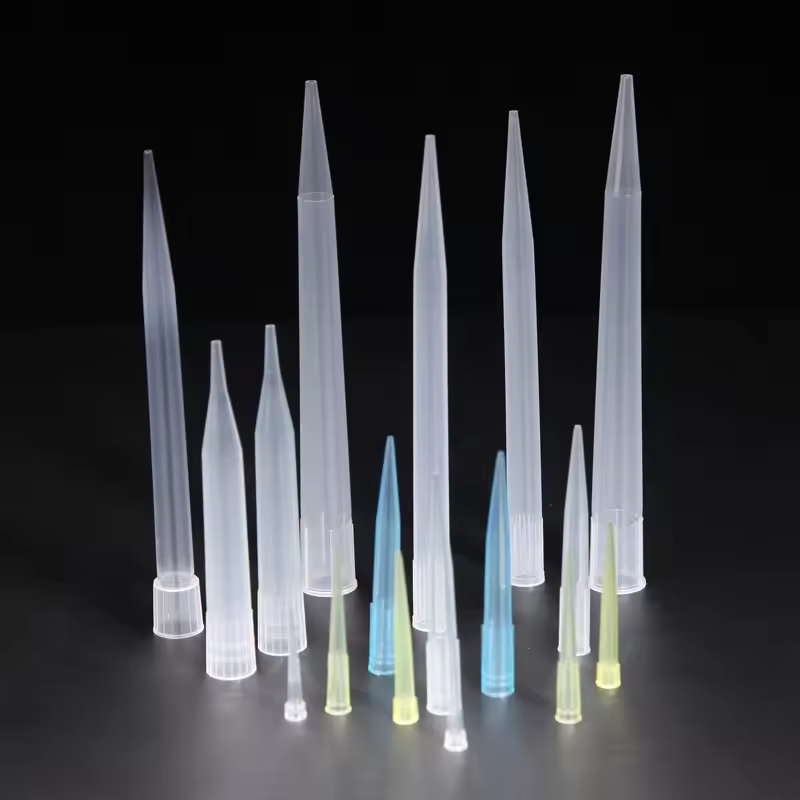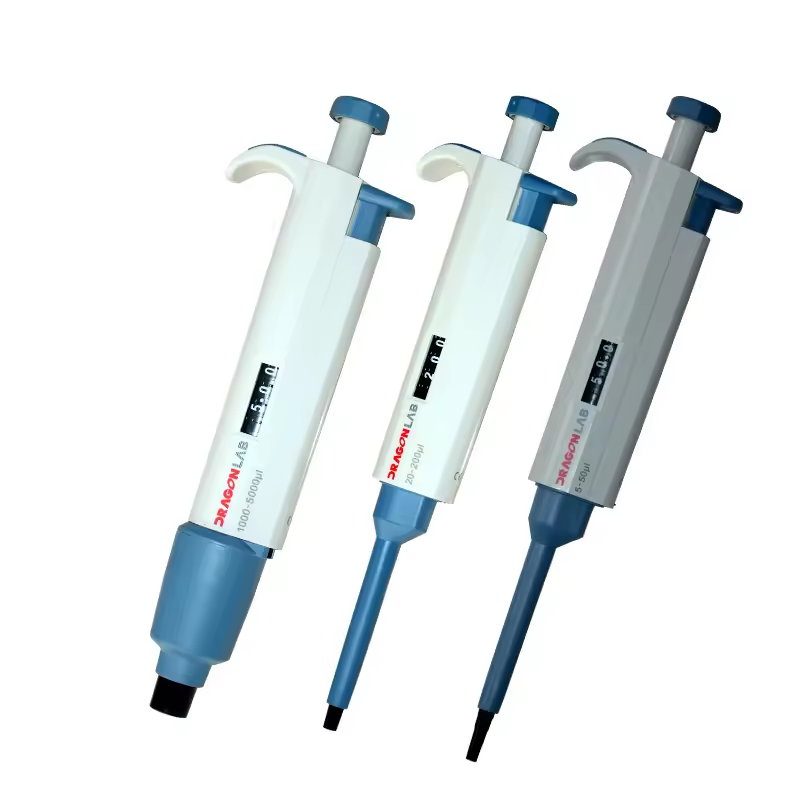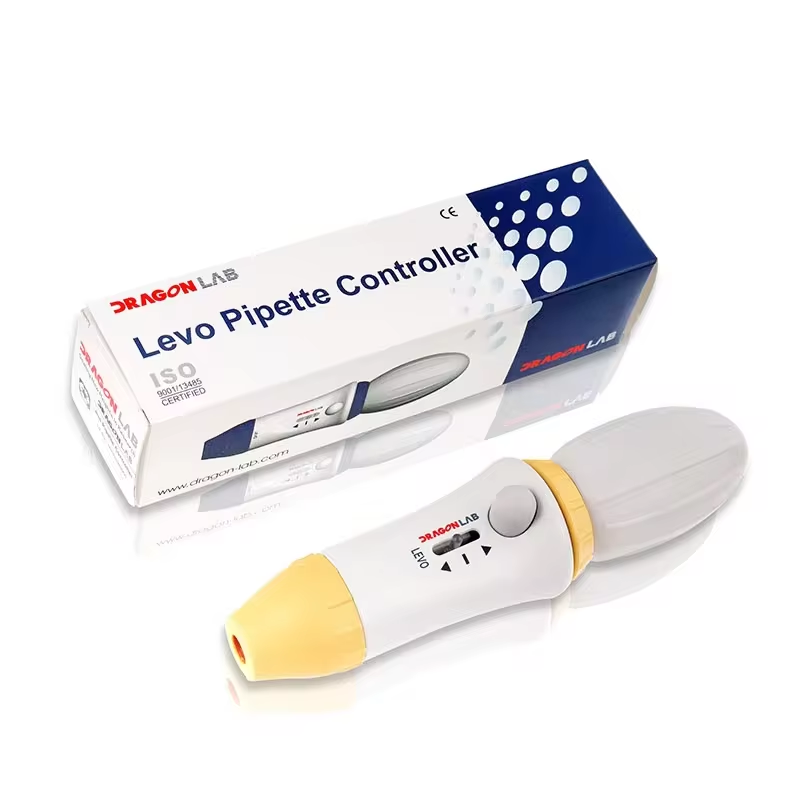What is Pipettor Calibration?
Pipettor calibration ensures that pipettes deliver accurate and precise volumes of liquid. It involves checking and adjusting the performance of a pipette to meet specific standards. This process validates whether the pipettor functions according to its intended specifications.

Calibration includes both measurement and correction stages. The measurement phase identifies errors or deviations in the pipettor’s accuracy. The correction phase adjusts the device to minimize these errors.
Most laboratories rely heavily on pipettors for precise liquid handling in experiments. Accurate calibration prevents errors that could compromise results. Calibration helps ensure reproducibility and reliability in scientific research.
Routine calibration is essential for maintaining quality control. It confirms that pipettors are working as expected and adhere to industry standards. Usage, environmental factors, and wear and tear can affect a pipettor’s performance. Calibration addresses these factors to ensure consistent operation.
Importance of Accurate Pipettor Calibration
Accurate pipettor calibration ensures reliable and precise liquid measurements in laboratory experiments. This precision is essential in scientific research, clinical diagnostics, and pharmaceutical development. Errors in liquid handling can lead to compromised results or failed experiments.
Enhancing Experimental Reliability
Proper calibration reduces variability in results, ensuring experiments are reproducible and consistent. Reproducibility is crucial in research studies that involve complex procedures. Calibrated pipettors provide confidence in measurements, supporting reliable data collection.
Ensuring Regulatory Compliance
Many industries require adherence to strict standards for equipment performance. Accurate calibration ensures compliance with regulatory guidelines, such as ISO or GLP protocols. Meeting these standards is vital for maintaining credibility and avoiding penalties.
Avoiding Costly Errors
Pipettor inaccuracies can cause wasted reagents, failed assays, and inconsistent findings. These issues increase costs and delay progress in research or production. Regular calibration prevents such costly operational setbacks.
Maintaining Equipment Longevity
Frequent calibration helps detect small issues before they become major problems. Identifying these early can prolong the life of the pipettor. It reduces the risk of frequent repairs or replacements.
Supporting Quality Control
Calibration strengthens quality control processes by verifying that pipettors perform correctly. High-quality pipettor performance minimizes sample loss and ensures accurate dosing in scientific workflows. This guarantees trustworthy outcomes in critical experiments.
Common Issues Caused by Incorrect Calibration
Incorrect calibration of pipettors can lead to significant issues in laboratory settings. These problems affect experimental reliability, regulatory compliance, and overall operational efficiency.
Inconsistent Measurements
Calibration errors cause variations in liquid volumes. This inconsistency compromises experimental accuracy and repeatability. Results become unreliable, impacting scientific findings and conclusions.
Experimental Failures
Incorrect volumes can result in failed procedures. Assays, reactions, or tests may not produce usable data. This wastes resources and delays progress.
Regulatory Non-Compliance
Improper calibration can lead to non-compliance with industry standards. This risks penalties and loss of credibility, especially in regulated environments.
Increased Costs
Errors from uncalibrated pipettors cause reagent waste and require repeating experiments. This raises operational costs and reduces efficiency.
Equipment Damage
Incorrect calibration forces pipettors to operate beyond their specifications. This accelerates wear and tear, reducing equipment lifespan.
Quality Control Issues
Uncalibrated pipettors compromise quality control. Experiments lose precision, leading to sample loss and inaccurate results.
Regular calibration can eliminate these issues, ensuring pipettors deliver accurate, consistent performance.
How Frequently Should Pipettors Be Calibrated?
Regular pipettor calibration is crucial for maintaining accuracy and reliability in laboratory experiments. The frequency of calibration depends on several factors, including the type of pipettor, usage intensity, and environmental conditions.
Factors Influencing Calibration Frequency
- Usage Intensity: Pipettors used daily or for critical tasks require more frequent calibration. Continuous use affects precision.
- Application Type: In sensitive applications, such as pharmaceutical research, monthly calibration may be needed. Less demanding tasks might require quarterly checks.
- Environmental Conditions: Laboratories with fluctuating temperatures or humidity should calibrate more often. These conditions impact pipettor performance.
- Regulatory Guidelines: Compliance with standards like ISO or GLP often dictates calibration intervals. Follow industry-specific regulations to ensure adherence.
General Recommendations
- Routine Calibration: Schedule calibration at least every three to six months for normal usage.
- High-Intensity Usage: For pipettors used extensively, calibration might be necessary every one to two months.
- Event-Based Calibration: Calibrate immediately after major issues like physical damage or liquid contamination.
- Annual Verification: Perform an annual calibration audit to ensure performance aligns with regulatory standards.
Benefits of Timely Calibration
Frequent calibration minimizes errors, enhances reproducibility, and prolongs equipment life. Adhering to recommended schedules ensures reliable performance and cost efficiency.
Step-by-Step Guide to Pipettor Calibration
Calibrating a pipettor involves a systematic process to ensure accuracy in liquid measurements. Follow these steps carefully to maintain precision and reliability.
1. Assemble Necessary Tools
Gather necessary tools like calibration weights, balances, and distilled water. Ensure the calibration setup is complete.
2. Clean the Pipettor
Thoroughly clean the pipettor before calibration. Remove any residue that could affect measurements.
3. Inspect for Physical Damage
Check the pipettor for cracks, wear, or loose components. Address issues before proceeding.
4. Adjust Environmental Conditions
Ensure the calibration area has a stable temperature and humidity. Avoid drafts and vibrations.
5. Perform Pre-Weighing Tests
Weigh the empty container on a precision balance. Record this value as the baseline reading.
6. Select the Proper Volume
Set the pipettor to the volume specified in the calibration plan. Use standard volumes for accuracy checks.
7. Dispense Liquid
Use the pipettor to dispense liquid into the weigh container. Repeat multiple times for consistency.
8. Measure and Record Results
Weigh the dispensed liquid, subtract the baseline, and record the net weight. Compare results with expected values.
9. Analyze Results
Evaluate if the deviations fall within acceptable error margins. Adjust the pipettor if necessary.
10. Recheck After Adjustments
Repeat the dispensing and weighing process after making adjustments. Confirm accuracy before finishing.
11. Label and Document
Label the pipettor with the calibration date. Maintain detailed records for reference and audits.
Following these steps ensures your pipettor performs reliably in all critical tasks. Regular calibration is essential for scientific accuracy.
Best Practices for Maintaining Pipettor Accuracy
Maintaining pipettor accuracy ensures reliable and consistent performance in laboratory experiments. Proper care and routine practices can prevent errors and extend the longevity of your equipment. Implement the following best practices to uphold pipettor accuracy:
1. Perform Regular Calibration
Schedule pipettor calibration based on usage and application needs. Calibrate at least every three to six months. For frequent use, conduct calibration more often to ensure precision.
2. Handle Pipettors with Care
Avoid dropping or mishandling pipettors to prevent internal damage. Always use two hands to operate the device securely. When not in use, store pipettors vertically in a designated holder.
3. Use Compatible Tips
Use high-quality, compatible tips to prevent leakage or inaccurate measurements. Ensure tips fit tightly and evenly.
4. Keep Pipettors Clean
Clean pipettors after every use to remove residue or contaminants. Disassemble and thoroughly clean internal parts periodically.
5. Store in Suitable Conditions
Store pipettors in a dry, temperature-controlled environment. Avoid extreme temperatures or humidity to maintain performance.
6. Pre-Wet Tips Before Use
Pre-wet pipette tips before dispensing liquid to promote consistency. This minimizes volume variability due to liquid adhesion.
7. Avoid Immersing Pipettors in Liquids
Do not submerge the pipette body in liquids to prevent internal contamination. Only immerse the tip as needed.
8. Inspect for Wear and Tear
Regularly check pipettors for cracks, stiffness, or loosened components. Address minor damage to prevent larger problems.
9. Train Lab Personnel
Educate team members on proper pipettor use and maintenance techniques. Offer periodic training for best results.
10. Conduct Routine Performance Checks
Periodically test pipettors with known volumes to verify accuracy. Document results for consistent tracking.
By adopting these best practices, laboratories can ensure that pipettors deliver accurate, reproducible results. Proper care reduces errors and keeps equipment operational for longer.
Tools and Equipment Needed for Calibration
Accurate pipettor calibration depends on using the right tools and equipment. Properly equipped laboratories ensure precise measurements and avoid calibration errors. Below is a list of essential items needed for calibration:
1. Analytical Balance
An analytical balance is critical for measuring liquid weight with high precision. It has a sensitivity of up to 0.0001 grams.
2. Calibration Weights
Standard calibration weights help verify and adjust the accuracy of the balance before use. Always use certified weights.
3. Distilled Water
Distilled water serves as the liquid medium for calibration. It has a known density and minimizes impurity interference.
4. Pipette Calibration Software
Advanced calibration software simplifies data recording and analysis. It saves time and ensures consistency in documentation.
5. Temperature and Humidity Sensors
Environmental factors affect liquid density and equipment precision. Sensors monitor these variables to provide optimal calibration conditions.
6. Clean Containers
Use clean, dry containers to collect and weigh dispensed liquid. Dust or residue can skew results.
7. Stopwatch or Timer
Timing tools enable consistency in environmental adjustments and liquid dispense intervals during calibration.
8. Pipette Stands
Pipette stands hold pipettors upright during calibration. Proper positioning ensures accurate volume delivery.
9. Personal Protective Equipment (PPE)
PPE such as gloves and lab coats safeguard users and reduce contamination risks during calibration procedures.
10. Manufacturer’s Calibration Manual
Always refer to the pipettor’s manual for volume specifications and adjustment guidelines. This guarantees compliance with factory settings.
Having the right tools and equipment ensures reliable and repeatable calibration. Proper preparation ensures precision and enhances calibration efficiency.
How to Identify When Your Pipettor Needs Recalibration
Regular recalibration of pipettors ensures accurate performance. However, knowing when recalibration is needed is essential. Changes in performance, visual wear, or environmental factors signal the need for recalibration. Below are key indicators:
Deviation in Measurement Accuracy
If liquid volumes consistently deviate from expected values, recalibration is required. This impacts experimental reliability.
Frequent Experimental Failures
Experiment anomalies often result from inaccurate pipetting. Recalibration ensures consistent liquid delivery and prevents failures.
Visible Wear and Tear
Physical damage like cracks or loose components affect pipettor accuracy. Address these with immediate recalibration.
Extended Period Without Calibration
If the pipettor hasn’t been calibrated recently, accuracy may decline. Follow routine calibration schedules.
Environmental Changes
Frequent exposure to temperature or humidity fluctuations can impact pipettor performance. Ensure recalibration in such cases.
Change in Usage Intensity
Increased frequency or critical use requires frequent calibration. High usage affects pipettor precision.
Contamination or Liquid Intrusion
Exposure to contaminants or liquid inside the device distorts accuracy. Recalibrate immediately if this occurs.
Regulatory Compliance Checks
During audits, recalibration may be necessary to meet industry standards like ISO or GLP.
Monitor these signs to maintain pipettor functionality. Timely recalibration ensures reliable results and extends equipment life.